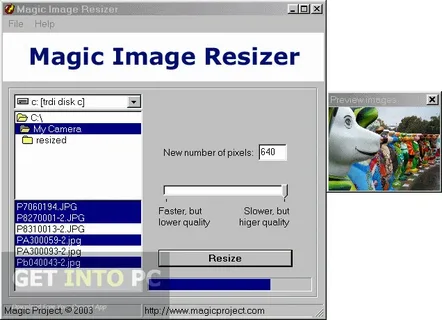Illustration Art The Creative Bridge Between Imagination and Expression
Illustration art has always been a powerful form of visual storytelling, connecting imagination with expression in a way that words alone cannot achieve. From traditional paintings to digital artwork, illustration art continues to shape how we experience design, media, and communication. It is not just about drawing—it’s about translating ideas, emotions, and narratives into visuals that speak directly to the viewer’s heart.
Understanding the Meaning and Purpose of Illustration Art
Illustration art refers to visual imagery created to explain, decorate, or interpret concepts and ideas. Unlike fine art, which is often open to personal interpretation, illustration has a clear purpose—to convey a message. It appears everywhere, from book covers and advertisements to websites and magazines. Each illustration tells a story, enhances understanding, or adds visual appeal to written content.
The essence of illustration lies in its ability to simplify complex ideas. Whether it’s a conceptual editorial drawing or a playful children’s book image, illustration art makes content more relatable and engaging. Its versatility allows artists to blend creativity with communication, making it one of the most expressive forms of visual design.
A Journey Through the History of Illustration Art
Illustration art has evolved alongside human communication. Ancient civilizations used wall paintings and carvings to depict stories and beliefs. In the early print era, illustrations brought books and newspapers to life, giving readers a visual understanding of the written word. Artists like Gustave Doré and Norman Rockwell shaped the field with detailed and emotionally rich imagery.
With the rise of technology, illustration art entered a new era. The digital revolution opened up endless possibilities, allowing artists to create with precision and flexibility. Today, digital tools like Adobe Illustrator, Procreate, and Photoshop have become essential in modern illustration, blending traditional techniques with innovative design approaches.
The Different Styles of Illustration Art
Illustration art encompasses a wide range of styles, each serving a different purpose and emotion. Realistic illustration focuses on lifelike detail and accuracy, often used in advertising and educational materials. On the other hand, conceptual illustration focuses on ideas rather than appearances, making it popular in editorials and branding.
Minimalist illustrations use simplicity to convey clarity, while abstract art relies on shapes, colors, and forms to evoke feelings. There’s also comic and cartoon-style illustration, which blends humor and storytelling in a visual format. Modern illustration often combines multiple styles, creating unique artistic voices that reflect both creativity and context.
The Role of Illustration Art in Modern Communication
In today’s visual world, illustration art plays a vital role in branding, marketing, and media. Businesses use custom illustrations to differentiate themselves from competitors and connect emotionally with audiences. A hand-drawn style, for example, can make a brand feel approachable and authentic, while sleek digital illustrations create a modern and professional image.
Illustration art also enhances storytelling in advertising and content marketing. It helps explain concepts quickly and makes campaigns memorable. Illustrations are particularly effective in digital spaces like websites and social media, where visuals need to capture attention instantly. When used strategically, illustration art becomes a language of its own—universal, impactful, and timeless.
How Technology Has Transformed Illustration Art
The evolution of digital tools has transformed the creative process. Artists now have access to advanced software that allows experimentation with colors, textures, and techniques previously impossible in traditional media. Digital illustration offers flexibility and speed without sacrificing artistic depth.
Technology has also made collaboration easier. Artists can share work instantly, receive feedback, and refine their designs in real time. Social media platforms and online galleries have become global stages for showcasing illustration art, allowing creators to reach audiences worldwide. This digital evolution has made illustration not just an art form but a thriving industry full of innovation and opportunity.
Illustration Art in Branding and Advertising
Brands are increasingly turning to illustration art to create distinctive visual identities. Unlike stock photos, custom illustrations reflect a brand’s unique story and tone. They help shape perception, enhance user experiences, and make marketing content more memorable.
For instance, companies use illustration art in packaging, digital interfaces, explainer videos, and social campaigns. The flexibility of illustration allows brands to adapt visuals across multiple platforms while maintaining a consistent identity. This ability to blend creativity with communication makes illustration one of the most powerful tools in modern brand storytelling.
The Emotional Connection in Illustration Art
One of the most remarkable aspects of illustration art is its emotional depth. It can make people feel joy, nostalgia, curiosity, or inspiration. Artists use color, composition, and symbolism to connect with viewers on a deeper level. This emotional resonance makes illustration art an essential part of everything from children’s stories to advocacy campaigns.
A well-crafted illustration does more than look beautiful—it makes people think and feel. That emotional pull is what turns an image into a memory and a story into a lasting impression.
Building a Career in Illustration Art
For aspiring artists, illustration art offers endless opportunities across industries. From publishing and animation to marketing and product design, illustrators are in high demand. Success in this field comes from combining technical skill with creative originality. Artists must also understand their audience, adapt to different styles, and keep up with design trends and technologies.
Building a portfolio that showcases range and storytelling ability is key. Many illustrators work as freelancers, collaborating with agencies or clients worldwide. Others join design studios or creative teams, contributing to campaigns and visual projects that shape brand experiences.
The Future of Illustration Art
As digital communication continues to grow, illustration art is evolving into new formats such as motion graphics, augmented reality, and interactive design. Artists are experimenting with 3D techniques and generative tools, expanding the boundaries of creativity. The fusion of technology and artistry is creating immersive visual experiences that captivate audiences like never before.
Despite these innovations, the essence of illustration art remains unchanged—it’s about expressing imagination through visuals that resonate with people. The tools may evolve, but the artist’s vision and creativity will always be at the heart of great illustration.
Conclusion
Illustration art is more than an aesthetic choice; it’s a language that communicates ideas, emotions, and stories with timeless appeal. It bridges imagination and reality, shaping how we see brands, books, and visual media. As technology continues to evolve, the potential of illustration grows even more powerful. For businesses and creators alike, investing in high-quality illustration art is a step toward building deeper connections and lasting impressions.



